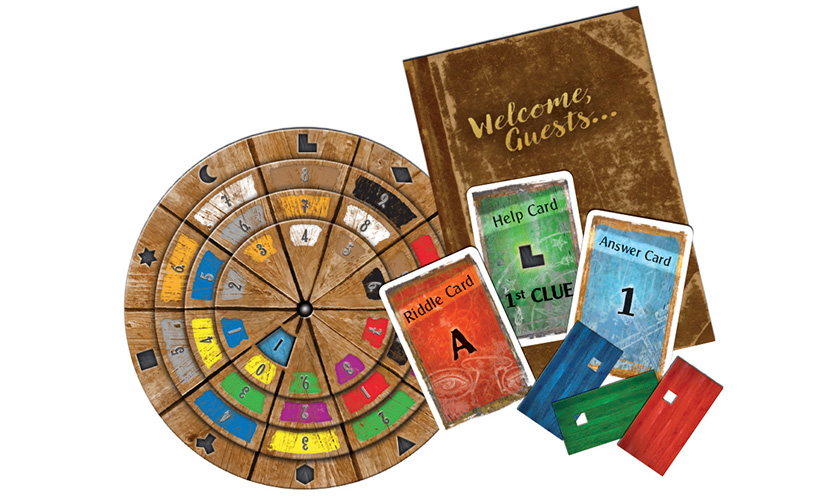When I interviewed Conor Murphy of Foxing on my podcast a few weeks ago, he recommended a book called Of Dice and Men: The Story of Dungeons & Dragons and the People Who Play It, by David Ewalt, that gives a light history of Dungeons & Dragons. It’s a fun read even if you’re just a casual player, one where the author leans into his self-vowed nerdiness, mixing the history of the game (and tabletop role-playing games in general) with his own experiences playing as a kid and again as an adult.
It may surprise some of you who know of my love for tabletop board games – or just think I’m a big nerd myself, which is probably accurate – that I have never been much of a PnP (pen and paper) D&D player. I did try it in middle school, and also played a little bit of the post-apocalyptic game Gamma World, which came from the same publisher, but never played either very much or for very long. I had some friends who really tried to get me into it, but I found the in-person experience kind of slow and often disorganized. My knowledge of D&D derives far more from playing computer games based on it, notably The Pool of Radiance (the first “gold box” game) and the Baldur’s Gate trilogy, than from the paper version. I liked Pool of Radiance, which I played up until I faced Tyranthraxus, the big foozle at the end of the game, whom I could never defeat, but I loved the Baldur’s Gate games for their incredible story, strong writing, and rich production values, and played the whole thing through multiple times. I can still quote lines from the audio track, and have given up on several similar games I’ve tried since then because they either couldn’t offer the same kind of thoughtful, immersive environment (Temple of Elemental Evil), or because I’d face a poorly designed, difficult battle early in the game, and just bailed (Icewind Dale).
Ewalt’s book is about the pen and paper game, and starts back in the 1950s, well before the game we know now as D&D was even a gleam in the eyes of Gary Gygax and David Arneson. D&D was novel in several ways, especially its open-ended nature and the legacy aspect of one play session affecting the next, but it has its roots in multiple games that came well before it. War games predate role-playing games by a few decades, and several, including the 1960s title Braunstein, directly influenced Arneson (who used it as inspiration for his own fantasy campaign setting Blackmoor, which later became an official D&D campaign setting). Ewalt gives a brief history of gaming, going back to ancient Egypt, then fast-forwards to the 19th and 20th centuries, getting to wargaming and the advent of D&D in short order.
The history of Dungeons and Dragons could probably fill a longer book, although it might bog down in stories of internecine warfare, as Gygax especially seemed to have a habit of alienating colleagues, running Arneson out of the company and trying to erase the latter’s contributions entirely (spurring multiple lawsuits Gygax and his company, TSR, would lose). Gygax’s personality, including what Ewalt depicts as a belief that TSR was his own personal fiefdom, led to his ouster from the firm after a few years of financial mismanagement. Wizards of the Coast bought TSR in 1997, as the company was approaching insolvency, and Hasbro later bought Wizards of the Coast, so D&D now resides in the portfolio of the largest board game publisher in the world.
Ewalt intersperses stories from the main campaign he’s playing as an adult at the time he was writing this book, which I found less interesting than the actual D&D history he provides, and that probably won’t make much sense if you’ve never played the game yourself. However, that narrative allows Ewalt to go into some of the specifics of D&D for the non-gamer – the basic framework of characters and parties, different mechanics, the changes in rules over the course of D&D’s history, even more arcane stuff like why there are clerics and bards and monks in the game. I was willing to hang with the details of his own campaign – which I found a bit ridiculous, as a non-PnP guy who’s pretty much stuck to CRPGs in fantasy settings – because it served that broader purpose.
If you’re not a DnD player at all, but would enjoy learning the superficial history of the game, you might enjoy Of Dice and Men anyway, since it’s very light and well-written, with some self-deprecating humor that helps Ewalt from sounding too pretentious. If you’ve played the game anywhere, in any form, you’ll probably enjoy the trip down memory lane.
Next up: Anne Lamott’s Bird by Bird: Some Instructions on Writing and Life.






